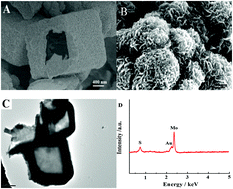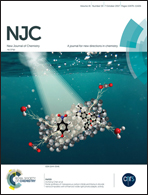A sandwich-type electrochemical biosensor for alpha-fetoprotein based on Au nanoparticles decorating a hollow molybdenum disulfide microbox coupled with a hybridization chain reaction
Abstract
In this work, a sensitive sandwich-type biosensor for detecting alpha-fetoprotein (AFP) is developed by using a target-triggered hybridization chain reaction strategy. An Au nanoparticles (AuNPs)/hollow molybdenum disulfide (MoS2) microbox hybrid is prepared and used as the supporting substrate of the biosensor. The sensing system mainly consists of three parts as follows: first, primary antibodies (Ab1) are immobilized on the surface of AuNPs; second, secondary antibodies (Ab2) conjugate with the DNA primer; third, long DNA concatemers from the HCR are used as a carrier for horseradish peroxidase enzymes via a biotin–avidin reaction. A sandwich complex is formed among primary antibodies, target AFP and secondary antibodies conjugated with the DNA primer via a specific recognition reaction. Afterwards, the amperometric technique is applied to record the current response of a hydrogen peroxide + hydroquinone system. A sensitive assay is developed for AFP with a linear range of 0.00005–75 ng mL−1. An ultra-low detection limit of 2.0 fg mL−1 with excellent selectivity for even discriminating differences between various proteins and AFP is achieved. Furthermore, the biosensor is successfully applied to detect target AFP in human serum samples. This sensitive method is also promising for the determination of other biomolecules.



 Please wait while we load your content...
Please wait while we load your content...